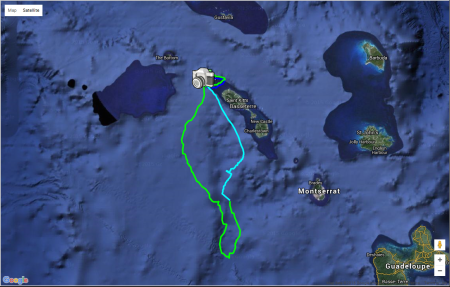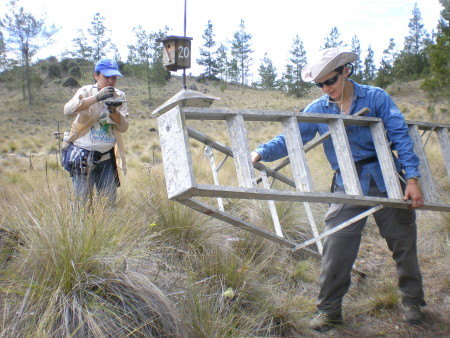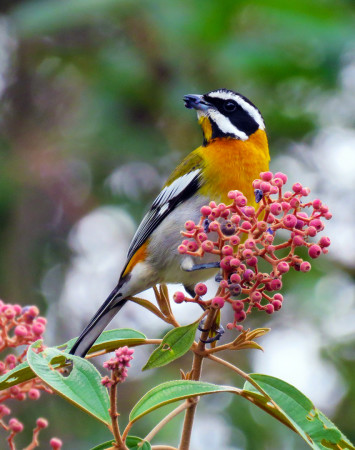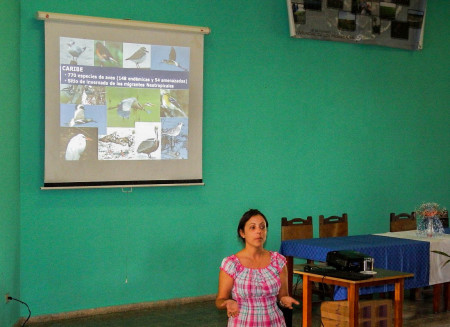I’ve been on a Warbler-fest. I am very fortunate to have recently observed several endemic Caribbean warblers, from the Elfin-woods Warbler of Puerto Rico to the Plumbeous Warbler on Guadeloupe. I also watched dozens of North American migrants as they island-hopped northward from the tropics. And, I just returned from Magee Marsh on the shore of Lake Erie, where many warbler species make their final stops before reaching their breeding grounds. Warblers are among the most beautiful and entertaining Caribbean birds, but they can also be some of the most challenging birds to identify. As an educator and professional naturalist, I want to help you make species identification fun and simple.


The New World Warblers—family Parulidae—include approximately 115 species in 25 genera found from South America to Alaska. With about 40 regularly occurring species in the Caribbean, they are a family every birder should know. Caribbean endemics comprise 15 species; 20 more are winter residents; and a few more only pass through the islands on their bi-annual migratory journeys between the Americas. This wide variety of warblers makes the Caribbean a year-round land of colorful ornaments glowing across the landscape.

From winter through spring, males molt into their flashy breeding, or alternate, plumages; this is prime time to witness their brightest colors. Each fall, however, the southbound birds—adults and young—arrive in the Caribbean showing their remarkably more subtle fall, or basic, plumages. I can’t think of a better place to study “those confusing fall warblers.” Let’s learn a bit more about identifying these fascinating birds—in all seasons.
Hints on Observing and Identifying Caribbean Warblers
What is a Warbler?

Many Caribbean songbirds are easily confused with warblers, but observing a few subtle characters can help identify birds in the warbler family. For example, sparrows, grassquits, and finches are similar in size and shape, but warblers have more delicate bills adapted for catching their tiny insect prey. Warblers also superficially resemble vireos, but the vireo bill is typically thicker than that of the warbler, usually with a noticeable hook on the upper mandible. Other warbler-esque birds include gnatcatchers, which are smaller bodied but with longer tails; wrens, with longer bills and hunched postures; and the larger thrushes, which forage mainly on the ground.

The New World Warblers do have a suite of unifying characters that will help separate them from these other songbirds. Most warblers are small-bodied and thin-billed. Most are colorful and more strongly patterned than similar birds. A majority have some yellow and black, with various species adding red, blue, grey or brown markings. And warbler songs tend to be fast and high-pitched. A handful of warblers are a bit less ‘warbler-like,’ including the slightly larger ground-feeding Ovenbird and two species of waterthrush.
Start with the Species Characteristics

Identifying showy males in their breeding colors can make one feel like an instant expert, but it helps to learn a few subtle field marks that are typically displayed by both sexes. For example, the male and female Northern Parula both exhibit a broken eye ring, a yellow lower mandible and two white wing bars. If you happen to spot a colorful male first, search nearby branches for a female to study her more subdued colors. In many cases, Caribbean endemic species, such as the St. Lucia, Adelaide’s, and Barbuda Warblers, show less sexual dimorphism than migratory species.
Note Behavior

We often think of warblers as nervous birds flitting among the branches high in the treetops, but exceptions abound. The Black-and-White Warbler acts more like a nuthatch, climbing up and down along the tree trunks; the Palm Warbler is a habitual tail-pumper; and the male American Redstart fans its beautiful black and orange tail when foraging. As breeding season approaches, only males of the resident species will typically be heard singing, with migrants only uttering a confusing array of ‘chip’ notes.
Location, Location, Location

Knowing the habitat preferences of different species could quickly help you make an identification. Coastal mangroves, dry scrub lands, pine forests and mountain-top cloud forests will each have its unique assemblage of species. And within each habitat, you’ll find certain species partitioned into microhabitats. While the Ovenbird, Northern Waterthrush and Lousiana Waterthrush share similar habitat on the forest floor, you’ll notice that the waterthrush species are nearly always seen foraging right along a muddy creek bank or pond edge, while the Ovenbird tends to forage among the woodland leaf litter.
Observe Color and Patterns

You mainly see the underparts of canopy-loving species, but many of these species are identifiable from this angle. The American Redstart shows a patchy orange and black undertail, and the Yellow Warbler shows a solid yellow tail, undertail coverts, and belly. If you’re lucky enough to observe a bird lower in the canopy, you’ll want to pay attention to plumage features like eye rings, crown stripes, cheek patches, breast streaking, wing bars and rump patches. Many species have patchy yellow and black, so note the locations of each color; the male Common Yellowthroat sports a bold black face mask but the Hooded Warbler shows a yellow face with black crown and throat!
Watch from All Angles

Many species may be readily identified from a single field mark—like Martinique’s Yellow Warbler, with its reddish-brown head or the Magnolia Warbler with its bold black breast streaks. Identifying other species, however, may require that you see the bird from different angles to observe multiple field marks. Challenge yourself to keep watching a bird and learn its more subtle markings. The next time you get only a fleeting glimpse of the same bird’s rump or belly, you’ll be more confident in its identification, not to mention, impressing your less observant birding pals!
Use a Field Guide

A good field guide will help narrow down the possibilities with each bird’s status, range and habitat descriptions. For example, if you’re in Puerto Rico, your field guide will tell you that that the Elfin-woods Warbler is endemic on the island but that the similarly streaked Blackpoll Warbler is not likely to be found in the same forests. Field guides can also help you decide among similar-looking species by comparing their levels of abundance. Thus, a yellowish warbler seen in the Bahamas is more likely to be a Pine or Yellow Warbler than the locally rare Nashville.
Sketch the Birds!

Follow the lead of the early naturalists. Keep a journal of your bird observations with notes and sketches. If you look at a bird long enough to sketch it, you will have a much better image in your mind than if you simply see the bird in your binoculars. Don’t dwell on how rough your finished sketches may seem; the simple act of sketching will help you learn the birds. Add written notes to your sketches to increase your chance of identifying a given bird –jot down characters of its song, its feeding behavior, its habitat and its color (be specific, like lemon yellow or slate blue).
Study Warblers throughout the Year
Don’t be intimidated by the thought of your sketches needing to look like ‘fine art’ or to resemble those found in field guides. Approach sketching as just another way to document your time in the field, valuing the process over the product, and I promise you’ll gain much in your ability to recognize a species the next time it crosses your path. Once you have a handle on knowing your fancy late winter and spring warblers, keep watching them through the late summer and fall, as they fade into their basic plumages. Learn the shapes and postures of the birds, as well as their favorite habitats during this season. Warblers give you a year-round reason for taking a sketching stroll, or just spending time outside. Key into subtle differences among similar species, and you will be a warbler star before the birds leave the islands the following spring!
Summary of Things to Notice when Identifying a Warbler
Most warblers have a similar body size and shape with a fairly short and slender bill. So your challenge is to notice what is different about them, which mostly comes down to plumage and behavior.
Coloration and color patterns:
Warblers come in two basic varieties; one type is relatively plain brown with some subtle streaking (like Ovenbirds and waterthrushes) and the other type is brightly colored and patterned, with varying amounts of yellow, red, blue, white and black (like the Prothonotary Warbler or the Black-throated Blue Warbler).
Also look for the following:
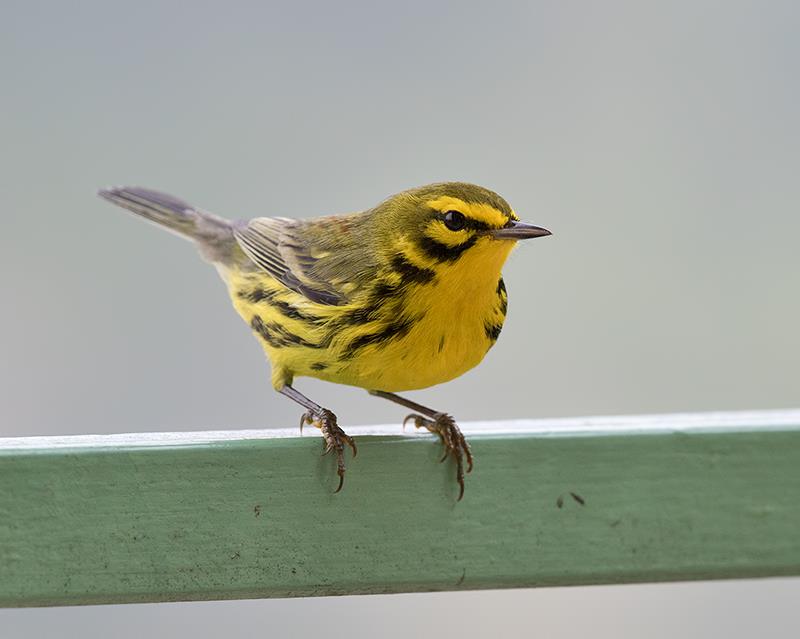
• An eye ring; its color, and whether it is complete or broken • Stripes around eye; either across, above, or below the eye • Patches of color on the cheeks or rump and their color • Stripes or streaking on the throat or breast • Wing bars and their color • Underparts (since that’s the only view you’ll often get of many species who flit quickly about in the treetops!). Notice the colors and patterns on their breast, belly, sides and undertail coverts.
Behavior:
• Is your warbler foraging in the trees or on the ground? • Does it fan its tail, spread its wings, bob or ‘wag’ its tail? • What angle does the bird hold its tail in relation to its body? • Is the bird’s gait hopping, walking or shuffling? • Character of its voice, the male’s song and the call and flight notes of both sexes
Click here to download my “Identifying Warblers in the Field” cheat sheet (PDF)

I have created this handy-dandy info-graphic for you to download. This Identifying Warblers in the Field downloadable pdf has bird templates for you to sketch on, adding field marks you see in the field, with tips on what to look for on birds to help identify them. Print it out, attach it to a clip board, and bring some colored pens or pencils with you next time you’re in the field.
Click here to download my “Parts of a bird” cheat sheet (PDF)

Many warblers have complex color patterns, especially on their heads. These patterns often follow the feather groups, for example, a stripe on the crown or a cheek patch on the auriculars, so it’s a good idea to learn the names and placement of these groups. This is a two-page pdf that includes a blank page for you to color code. By Christine Elder, a naturalist, educator and artist from Oregon who loves to travel, write and sketch birds. Christine taught sketching to Jamaican youth at our one-week BirdSleuth Caribbean summer camp (July 2015), held in conjunction with our 20th International Conference in Kingston, Jamaica, and gave a workshop on how to sketch birds at the conference. Find more hints on identifying warblers and using sketching as a learning tool at www.ChristineElder.com/warblers.

Recommended Field Guides for the Caribbean:
Birds of the West Indies (Second Edition). 2020. H. Raffaele, J. Wiley, O. Garrido, A. Keith and J. Raffaele. Princeton University Press. 288 pages. A Guide to the Birds of the West Indies. 1998. H. Raffaele, J. Wiley, O. Garrido, A. Keith and J. Raffaele. Princeton University Press. 511 pages. Note: although this book needs updating, it contains a wealth of information about all the species that occur in the West Indies. The hardcover has 86 color plates, detailed species notes, range maps and a handy Locality Checklist in the back; the softcover has 94 color plates, species notes and colored range maps. Birds of the Dominican Republic and Haiti. 2006. S. Latta, C. Rimmer, A. Keith, J. Wiley, H. Raffaele, K. McFarland, and E. Fernandez. Princeton Univeristy Press. 258 pages. Endemic Birds of Cuba: A Comprehensive Field Guide, including West Indian Endemics Residing in Cuba, by Nils Navarro. Available for purchase on our website at the link above (scroll down). 2015. Ediciones Nuevos Mundos, 168 pp.
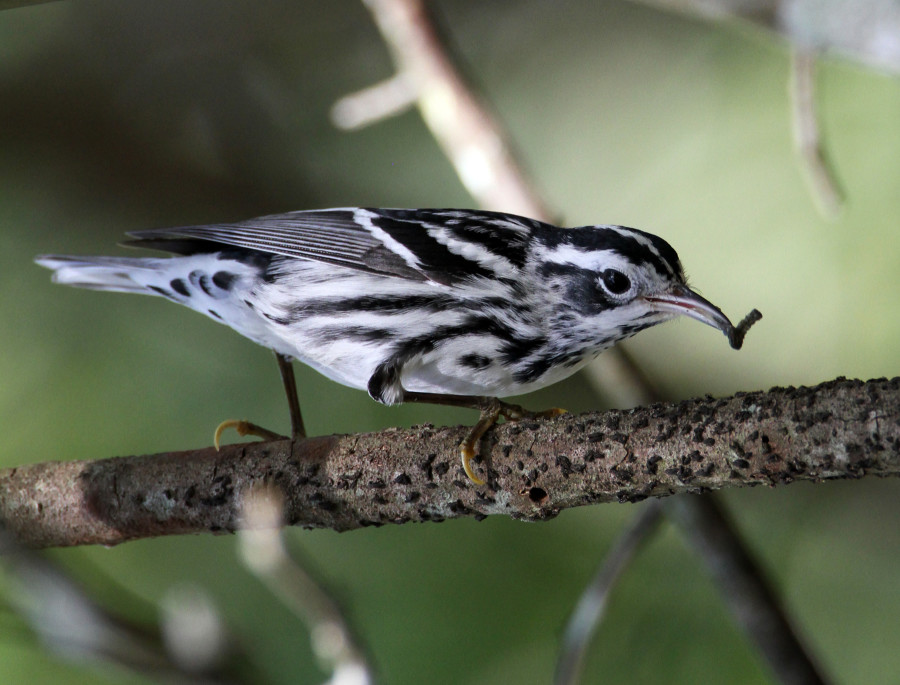
Field Guide to the Birds of Cuba, by O. Garrido and A. Kirkconnell. 2000. Comstock Publishing Associates, Ithaca, NY, 253 pp. English edition, Spanish edition A Photographic Guide to the Birds of Jamaica. 2009. A. Haynes-Sutton, A. Downer, and R. Sutton. Christopher Helm, London. 304 pages. Puerto Rico’s Birds in Photographs: A Complete Guide and CD-ROM including the Virgin Islands. 2010. Mark W. Oberle.Editorial Humanities, Seattle, WA. 135 pages. Beautiful Bahama Birds: Common Birds of the Bahama Islands. 2014. C. Wardle, L. Gape and P. Moore. Bahamas National Trust and BirdsCaribbean. 126 pages. Contact Carolyn Wardle




















